Taking hydroxychloroquine isn’t just about swallowing a pill. It’s about understanding what it does, what it doesn’t do, and how to stay safe while using it. Many people start this medication thinking it’s just another prescription - but the risks aren’t always obvious until it’s too late. That’s why education and ongoing support aren’t extras. They’re essential.
What Hydroxychloroquine Actually Does
Hydroxychloroquine was originally developed in the 1940s to treat malaria. Today, it’s most commonly prescribed for autoimmune conditions like lupus and rheumatoid arthritis. It doesn’t cure these diseases - it helps calm the immune system so it doesn’t attack your own body. That’s why patients often feel better after weeks or months on it. But it doesn’t work fast. And if you stop taking it because you don’t see results right away, you could make things worse.
It’s also not a painkiller. Some people expect it to reduce joint swelling immediately, like ibuprofen. It won’t. That mismatch between expectation and reality leads to early discontinuation - and that’s one of the biggest reasons treatment fails.
The Hidden Risks No One Tells You About
The most serious risk with hydroxychloroquine is damage to the retina. It’s rare - about 1 in 100 people after five years of use - but it’s permanent. And you won’t feel it coming. No pain. No blurry vision at first. Just slowly, quietly, your central vision starts to fade. That’s why annual eye exams aren’t optional. They’re life-changing.
Other side effects include nausea, dizziness, and low blood sugar. Some people get rashes. A few report muscle weakness. These aren’t rare. In fact, up to 30% of patients report at least one mild side effect in the first month. But if you don’t know what’s normal and what’s dangerous, you might ignore symptoms that need attention.
Why Most Patients Fall Through the Cracks
Doctors often prescribe hydroxychloroquine during a 10-minute appointment. They hand you a script and say, “Take one pill a day.” That’s it. No printed guide. No follow-up call. No warning about how it interacts with antacids, diabetes meds, or even certain heart drugs.
Patients are left to Google symptoms. And Google doesn’t know your medical history. One woman in Bristol stopped her pills after reading a forum post about retinal damage - then had a lupus flare-up that landed her in hospital. Another man kept taking it despite blurred vision because he thought it was just “tired eyes.” He lost 40% of his central vision before his optometrist caught it.
This isn’t about bad doctors. It’s about broken systems. Medication safety doesn’t start with a prescription. It starts with understanding.
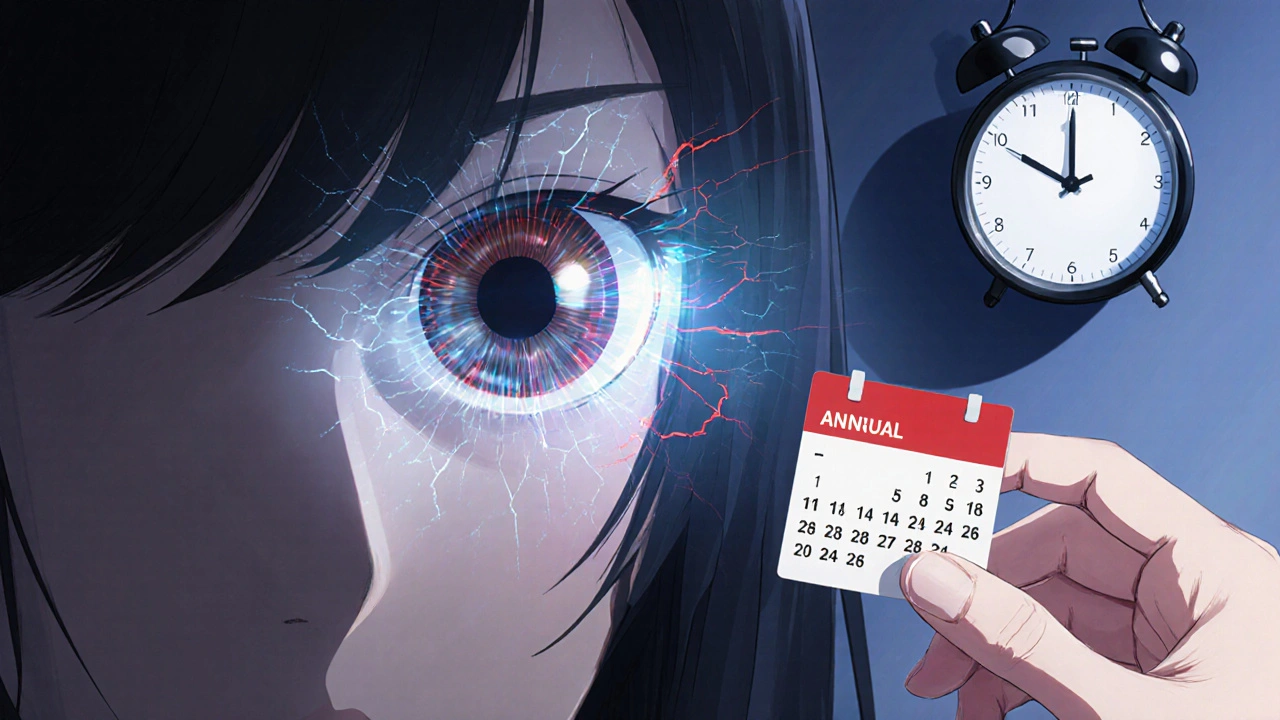
What Good Patient Education Looks Like
Effective education isn’t a pamphlet. It’s a conversation. It’s a checklist. It’s a reminder system.
- Clear explanation of why you’re taking it - not just “for your arthritis,” but how it stops your immune system from attacking your joints.
- Written instructions on when to take it (with food, not on an empty stomach).
- A list of drugs to avoid - like certain antibiotics or heart medications - that can cause dangerous interactions.
- A schedule for eye exams, blood tests, and follow-ups - with dates marked on your calendar.
- A symptom tracker: what’s normal (mild stomach upset), what’s not (sudden vision changes, ringing in ears, irregular heartbeat).
One clinic in Bristol started giving patients a small card - the size of a credit card - with all this info. It fit in their wallet. They showed it to pharmacists. They used it to remind themselves before each dose. Patients who used it were 60% less likely to stop treatment early.
The Role of Ongoing Support
Education is a starting point. Support keeps you on track.
Support means having someone to call when you’re unsure. It means a nurse checking in after two weeks. It means a peer group where people share how they handle nausea or remember to take their pills. It means telehealth appointments that don’t require a 2-hour commute.
Studies show that patients with structured support - even just monthly phone calls from a trained health coach - are twice as likely to stick with hydroxychloroquine for over a year. That’s not because they’re more motivated. It’s because they’re not alone.
One patient, a 58-year-old retired teacher, said she didn’t know what to do when she started seeing spots in her vision. She didn’t want to bother her doctor. She didn’t think it was serious. Then she got a call from the hospital’s medication support line. They told her to come in immediately. It was early retinal toxicity. Treatment started in time. Her vision stabilized.
What to Do If You’re Starting Hydroxychloroquine
If you’ve just been prescribed this medication, here’s what you need to do - right now:
- Ask your doctor for a printed summary of your treatment plan - including dosage, timing, and side effects to watch for.
- Book your first eye exam within 3 months, then schedule annual checks. Don’t wait for symptoms.
- Set phone alarms for your pills - and for your next blood test.
- Keep a list of all other medications you take, including vitamins and supplements. Share it with your pharmacist.
- Find out if your clinic has a medication support line or patient navigator. Ask for their number.
Don’t rely on memory. Don’t assume it’s fine if you feel okay. Hydroxychloroquine is a long-term medication. Its safety depends on vigilance - not luck.
What to Do If You’ve Stopped Taking It
If you stopped hydroxychloroquine because of side effects or fear - you’re not alone. But don’t assume you can’t try again.
Many side effects fade after the first few weeks. Nausea? Try taking it with a meal. Dizziness? Take it at night. Skin rash? Talk to your doctor - there might be a different formulation.
And if you stopped because you thought it wasn’t working? Talk to your doctor. It can take 3 to 6 months to see full benefits. Stopping too soon doesn’t mean it failed. It means you didn’t get the full chance.
Restarting is possible - but only if you do it with better support. Ask for a structured follow-up plan. Bring someone with you to your next appointment. Ask for a written plan again.
Final Thought: It’s Not Just About the Pill
Hydroxychloroquine is a tool. But tools don’t work without instructions. And people don’t stay safe without support.
This isn’t about blaming patients for forgetting pills or skipping eye exams. It’s about fixing the system that leaves them to figure it out alone.
When education and support are built into care - not added as an afterthought - people live better, longer, and with fewer complications. That’s not magic. That’s medicine done right.
Can hydroxychloroquine cause permanent vision loss?
Yes, in rare cases, hydroxychloroquine can cause irreversible damage to the retina, especially after long-term use (typically over 5 years). This is why annual eye exams with an ophthalmologist are mandatory. Early detection through screening can stop the damage before vision loss occurs. You won’t notice symptoms until it’s advanced - so waiting for blurry vision is too late.
How long does it take for hydroxychloroquine to work?
It usually takes 3 to 6 months to see the full effect for autoimmune conditions like lupus or rheumatoid arthritis. Some people notice small improvements in joint pain or fatigue after 4 to 8 weeks, but patience is key. Stopping early because you don’t feel better right away can lead to disease flares and make the condition harder to control later.
Can I take hydroxychloroquine with other medications?
Some medications can interact dangerously with hydroxychloroquine. Avoid combining it with certain antibiotics (like azithromycin), heart rhythm drugs (like amiodarone), and diabetes medications without medical supervision. Antacids and kaolin can reduce its absorption - take them at least 4 hours apart. Always give your pharmacist a full list of everything you take, including supplements.
What should I do if I miss a dose?
If you miss a dose, take it as soon as you remember - unless it’s close to your next scheduled dose. Never double up. If you’re unsure, call your pharmacist or doctor. Missing doses occasionally won’t cause harm, but regular missed doses can reduce effectiveness and increase the risk of disease flares.
Is hydroxychloroquine safe during pregnancy?
For women with lupus or rheumatoid arthritis, continuing hydroxychloroquine during pregnancy is often safer than stopping it. Studies show it reduces the risk of disease flares and complications like preterm birth. But always consult your doctor before making any changes. Regular monitoring is essential during pregnancy.
Are there alternatives to hydroxychloroquine?
Yes, depending on your condition. For lupus, alternatives include methotrexate, azathioprine, or belimumab. For rheumatoid arthritis, options include sulfasalazine, leflunomide, or biologics like adalimumab. But hydroxychloroquine is often preferred because it’s well-tolerated, inexpensive, and has a long safety record. Switching isn’t always better - and should only be done under medical guidance.

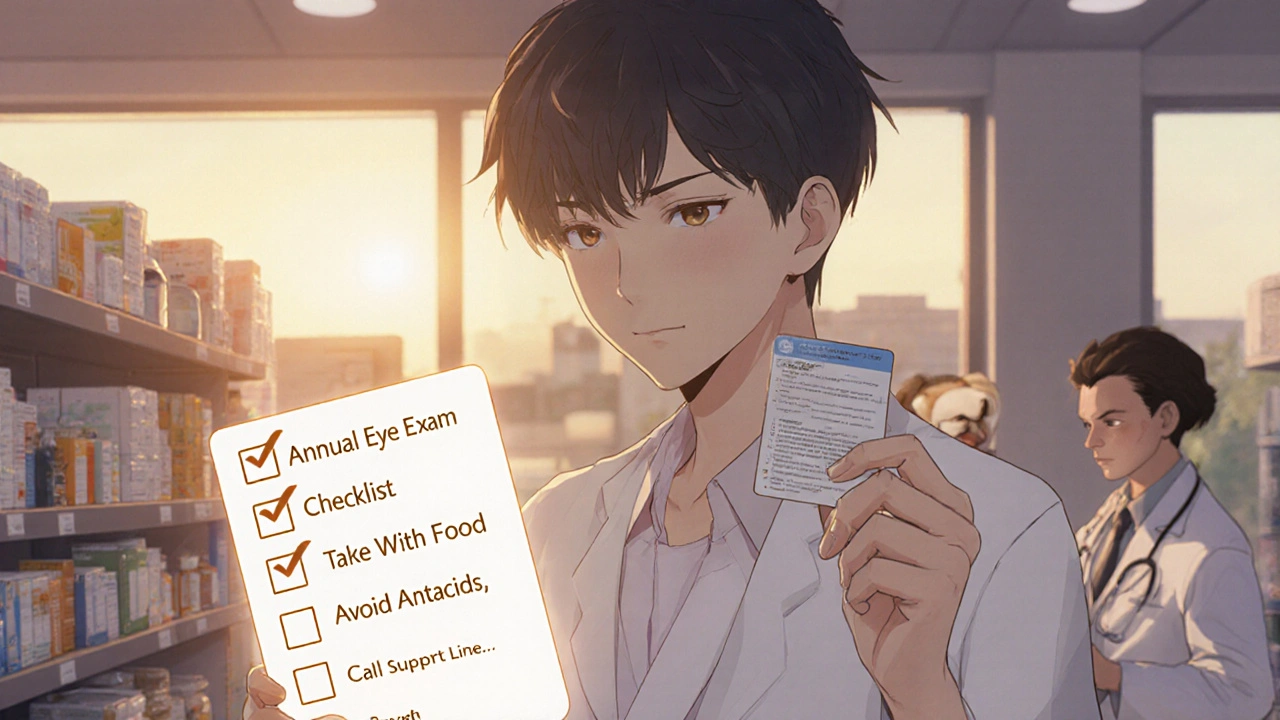

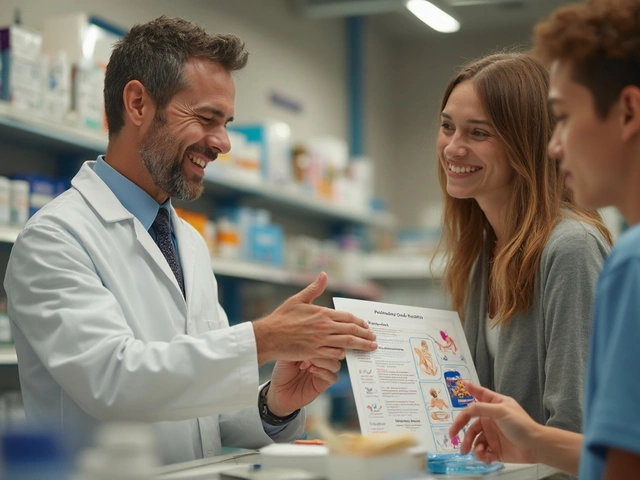

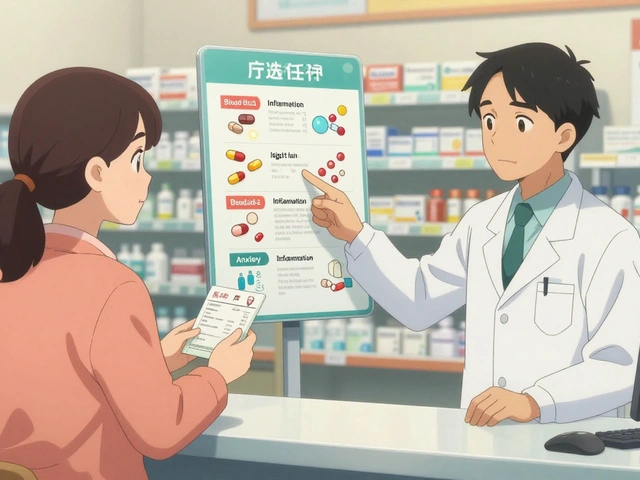
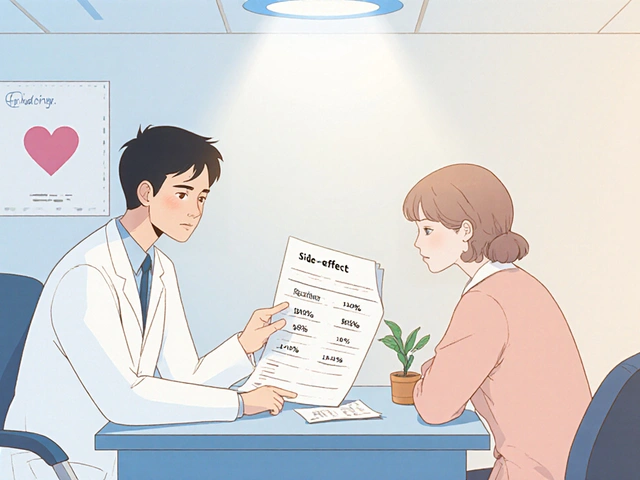

Herbert Lui October 30, 2025
Man, I wish I'd had this when I started hydroxychloroquine. I thought it was just another pill. Took it for months, didn't feel anything, quit. Then my lupus came back like a freight train. Turns out it's not a painkiller-it's a slow burn. And the eye thing? Never heard a word about it until my optometrist flagged it. Scared the hell out of me.
Now I carry that little card they mentioned. It's in my wallet next to my ID. I show it to pharmacists. I read it before bed. It's not magic-but it's the closest thing I've got to a safety net.
Nick Zararis October 31, 2025
PLEASE-do not skip your eye exams!! I know it’s boring, I know it’s inconvenient, I know you think you’re fine-but retinal toxicity doesn’t knock. It doesn’t yell. It just… steals your vision, one pixel at a time. And it’s irreversible. If your doctor doesn’t schedule it for you, DO IT YOURSELF. Book it. Pay for it. Drive across town. Your future self will thank you. I’m not exaggerating. I’ve seen it happen. And I’m not gonna let you ignore it.
Also-take it with food. Always. Nausea? Food. Dizziness? Food. Blurry vision? Maybe. But food helps. Always.
Sara Mörtsell November 1, 2025
Let’s be real nobody gives a damn about your medication unless it’s trendy or profitable. This drug’s been around since the 40s it’s cheap it’s generic it’s not glamorous so they don’t care. They hand you the script and send you on your way like a dog with a bone. Meanwhile your retina is slowly dissolving and your doctor’s on to the next patient with the next shiny new biologic. This isn’t healthcare this is assembly line medicine and you’re the part that gets replaced when it breaks.
And yes I know I sound dramatic but someone has to say it
Rhonda Gentz November 2, 2025
I’ve been on it for seven years. The first year was rough-nausea, dizziness, the whole thing. I almost quit. But I kept the card. I kept the alarms. I kept the appointments. And now? I’m stable. I can walk without pain. I can hold my granddaughter. That’s worth the vigilance.
It’s not about being perfect. It’s about showing up. Even when you’re tired. Even when you’re scared. Even when you think no one’s watching. You’re watching yourself. And that’s enough.
Alexa Ara November 4, 2025
Hey-I just started this med last month and I was freaking out. But reading this made me feel less alone. I set phone alarms for my pills and my eye appointment. I made a little chart in my notebook. I even told my mom so she can check in. It feels weird to be so organized about medicine-but I’d rather be that person than the one who ends up in the hospital. Thank you for writing this.
Also-my pharmacist gave me a free pill organizer. Small wins, right?
Olan Kinsella November 5, 2025
Hydroxychloroquine is a weapon. Not a cure. Not a miracle. A weapon. And weapons don’t come with instructions-they come with consequences. The system doesn’t want you to know this. They want you to believe it’s safe. But safety is a myth sold to the obedient. The retinal damage? That’s not a side effect. That’s a warning. And the people who ignore it? They’re not stupid. They’re just tired. And tired people don’t ask questions. They just swallow.
Who profits when you’re blind? Who profits when you’re back in the hospital? Think about that before your next dose.
Kat Sal November 6, 2025
I’m a nurse. I’ve seen this play out too many times. Patients stop because they’re scared. Or because they don’t feel better. Or because they don’t understand. We need better systems. We need more time. We need to stop treating patients like numbers. This post? This is what care looks like. Not just prescribing. Not just handing out pamphlets. Actually showing up. I’m printing this out for my clinic tomorrow. Thank you.
Rebecca Breslin November 8, 2025
Look I’ve read the studies. Hydroxychloroquine’s been linked to 12 different drug interactions and 8 potential cardiac risks. And you’re telling me to just take it with food and set alarms? That’s not medicine. That’s Band-Aid logic. If you’re going to take this, you need to be under constant monitoring. Daily EKGs. Weekly labs. Monthly retinal scans. Anything less is negligence. And if your doctor won’t do that, find a new one. Or don’t take it at all. I’m not being dramatic-I’m being accurate.
Kierstead January November 9, 2025
Oh wow. Another one of those ‘trust your doctor’ fairy tales. You really think this is about safety? This is about control. Hydroxychloroquine is cheap. It’s old. It’s not patented. So they push it because it keeps you dependent and keeps the cash flowing. The eye exams? A distraction. A way to make you feel like you’re doing something while they keep you on the leash. And don’t get me started on how they use ‘lupus’ and ‘arthritis’ as catch-alls to justify lifelong medication. Wake up.
Imogen Levermore November 9, 2025
ok but what if the eye damage is caused by the vaccines?? i mean i read on a forum that the cdc has a secret database where they track hydroxychloroquine retinopathy and it’s all linked to spike proteins?? and also i think the 1 in 100 stat is fake because my cousin’s neighbor’s dog had a similar issue after eating blueberries?? 🤔👁️💊 #truth #notmedicaladvice
Chris Dockter November 10, 2025
This post is full of lies. You’re scaring people away from a perfectly safe drug. Stop with the fearmongering. Take the pill. Don’t be a baby.